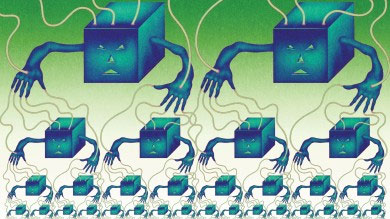The Top 10 Breakthrough Technologies Of 2017
These top ten breakthrough technologies all have staying power. They will affect the economy and our politics, improve medicine, or influence our culture. Some are unfolding now; others will take a decade or more to develop. But you should know about all of them right now.
The Top 10 Breakthrough Technologies Of 2017

Reversing Paralysis
Scientists are making remarkable progress at using brain implants to restore the freedom of movement that spinal cord injuries take away.
In recent years, lab animals and a few people have controlled computer cursors or robotic arms with their thoughts, thanks to a brain implant wired to machines. Now researchers are taking a significant next step toward reversing paralysis once and for all.

Self-Driving Trucks
Tractor-trailers without a human at the wheel will soon barrel onto highways near you. What will this mean for the nation’s 1.7 million truck drivers?
At first glance, the opportunities and challenges posed by self-driving trucks might seem to merely echo those associated with self-driving cars. But trucks aren’t just long cars. For one thing, the economic rationale for self-driving trucks might be even stronger than the one for driverless cars.
Autonomous trucks can coordinate their movements to platoon closely together over long stretches of highway, cutting down on wind drag and saving on fuel. And letting the truck drive itself part of the time figures to help truckers complete their routes sooner.

Paying with Your Face
Face-detecting systems in China now authorize payments, provide access to facilities, and track down criminals. Will other countries follow?
Over the past few years, computers have become incredibly good at recognizing faces, and the technology is expanding quickly in China in the interest of both surveillance and convenience. Face recognition might transform everything from policing to the way people interact every day with banks, stores, and transportation services.

Practical Quantum Computers
Advances at Google, Intel, and several research groups indicate that computers with previously unimaginable power are finally within reach.
Quantum computers will be particularly suited to factoring large numbers (making it easy to crack many of today’s encryption techniques and probably providing uncrackable replacements), solving complex optimization problems, and executing machine-learning algorithms. And there will be applications nobody has yet envisioned.

The 360° Selfie
Inexpensive cameras that make spherical images are opening a new era in photography and changing the way people share stories.
Because creating 360° content requires stitching together multiple images, doing it on the fly for live streaming represents an impressive technical achievement. Computer-vision algorithms have simplified the process so that it can be done on the camera itself, which in turn allows people to live-stream video with minimal delays.

Hot Solar Cells
By converting heat to focused beams of light, a new solar device could create cheap and continuous power.
A team of MIT scientists has built a different sort of solar energy device that uses inventive engineering and advances in materials science to capture far more of the sun’s energy. The trick is to first turn sunlight into heat and then convert it back into light, but now focused within the spectrum that solar cells can use. While various researchers have been working for years on so-called solar thermophotovoltaics, the MIT device is the first one to absorb more energy than its photovoltaic cell alone, demonstrating that the approach could dramatically increase efficiency.

Gene Therapy 2.0
Scientists have solved fundamental problems that were holding back cures for rare hereditary disorders. Next we’ll see if the same approach can take on cancer, heart disease, and other common illnesses.
Researchers have been chasing the dream of gene therapy for decades. The idea is elegant: use an engineered virus to deliver healthy copies of a gene into patients with defective versions. But until recently it had produced more disappointments than successes.

The Cell Atlas
Biology’s next mega-project will find out what we’re really made of.
To perform the task of cataloguing the 37.2 trillion cells of the human body, an international consortium of scientists from the U.S., U.K., Sweden, Israel, the Netherlands, and Japan is being assembled to assign each a molecular signature and also give each type a zip code in the three-dimensional space of our bodies.

Botnets of Things
The relentless push to add connectivity to home gadgets is creating dangerous side effects that figure to get even worse.
Botnets have existed for at least a decade. As early as 2000, hackers were breaking into computers over the Internet and controlling them en masse from centralized systems. Among other things, the hackers used the combined computing power of these botnets to launch distributed denial-of-service attacks, which flood websites with traffic to take them down.

Reinforcement Learning
By experimenting, computers are figuring out how to do things that no programmer could teach them.
Reinforcement learning, is largely how AlphaGo, a computer developed by a subsidiary of Alphabet called DeepMind, mastered the impossibly complex board game Go and beat one of the best human players in the world in a high-profile match last year.
Now reinforcement learning may soon inject greater intelligence into much more than games.


Comments are closed, but trackbacks and pingbacks are open.